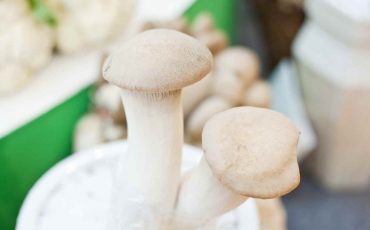For easy and fast profits, the cultivation of mushroom has become a very important crop in India. In India, the three main varieties of mushroom that are grown are the oyster mushroom, button mushroom and the Paddy straw mushroom. The most common mushroom which is found in Indian kitchen is the oyster mushroom. They are long and slightly chewier than the button mushrooms.
The button mushrooms are round and soft. They form a great ingredient in mushroom Manchurians and in light vegetable soup. Mushrooms can be grown very easily and they are not very costly crops as well. However, the production of mushroom is very high and hence, the profit return is extremely high in these cultivations. Here in, we have collected the various ways in which the three types of the mushroom can be cultivated in India.

The 6 most important steps of mushroom cultivation in India
Compost preparation is the most important step
Prepare the compost on which you are interested to grow the mushrooms. The compost can be synthetic or natural. For the synthetic compost, you need bran, urea, ammonium sulfate, wheat straw, and gypsum. The straw ought to cut carefully up to a length of 15cm to 20cm. Then the straw should be rinsed well with water. Remember not to puddle the straw with heaps of water.
This will tend to simply rot the straw. Once you have prepared the wet straw, then add all the mineral constituents to it. It can be mixed with a stick or a spatula. To be sure that the straw is mixed well, you can do the same manually. For at least two weeks, you have to keep mixing the extra products to the straw. In the natural compost, you can simply replace the chemical ingredients by horse manure and poultry manure.
Shift the compost to the trays with utmost care
Once you see that your compost is ready, put them and spread them well in the compost trays. The compost when transferred into the trays should neither be dehydrated nor should be soggy. The trays are better with a depth of 16cm to 20cm. If the trays are made of wood then they further strengthen the base of the cultivation.
Addition of spawns to the compost tray
After stacking the compost, the next step is spawning. This method of spawning might need some monetary fund. Spawning basically refers to the transfer of mushroom mycelium into the compost or to prepared soil. These days, through the government agricultural norms, you might receive the mushroom mycelium at very less cost. Once you purchase the spawns, you can either spread the same very neatly or can mix them in the prepared compost.
Usually, if the temperature will well maintained then the spawning process will wrap up in half a month. However, if there is a dip in the temperature, then perhaps the spawning time might get prolonged.
Casing and sterilizing
After the desired time of spawning, you will notice tiny white heads popping in the compost. That is exactly what is called casing. This casing soil might grow up to a depth of 2 cm to 3 cm. This casing soil once prepared by combining the cow dung with fertile garden soil, it is sterilized by formalin. If 500 ml of formalin is taken then the same ought to mixed in 10 litres of water. Then the mixture ought to be sprayed or sprinkled carefully on the casing soil.
Check the temperature of the compost
The compost should be regularly checked. The optimum temperature for the best mushrooms is 23°C to 25°C. If you happen to notice that the compost turns dry or it starts to heat up abnormally then you should spray water. The water should be spread not only on the compost but also along the walls of the room in which the mushrooms are cultured.
The final step is harvesting
Once you see there are mushrooms coming up from the compost, get ready for the harvest sessions. For the button mushrooms, you ought to break the head very firmly. It is better to harvest within a month after spawning so that the heads do not grow to form an open umbrella.
Conclusion
Over the years, the craze for mushroom items has seen a steady rise. Apart from being a great profitable cash crop, mushrooms are being exported as well. Since, these are easily grown and very less money and time investment is required, you can grow them at your home as well. Mushrooms at times might lead on to the growth of some unwanted and harmful mushrooms, so kindly check them well before you harvest them. Hopefully, with the years to come, the mushroom cultivation will become an important agricultural sector.


Comments
One response to “6 Finest Tips For Mushroom Cultivation In India”
Very clearly explained. Good article